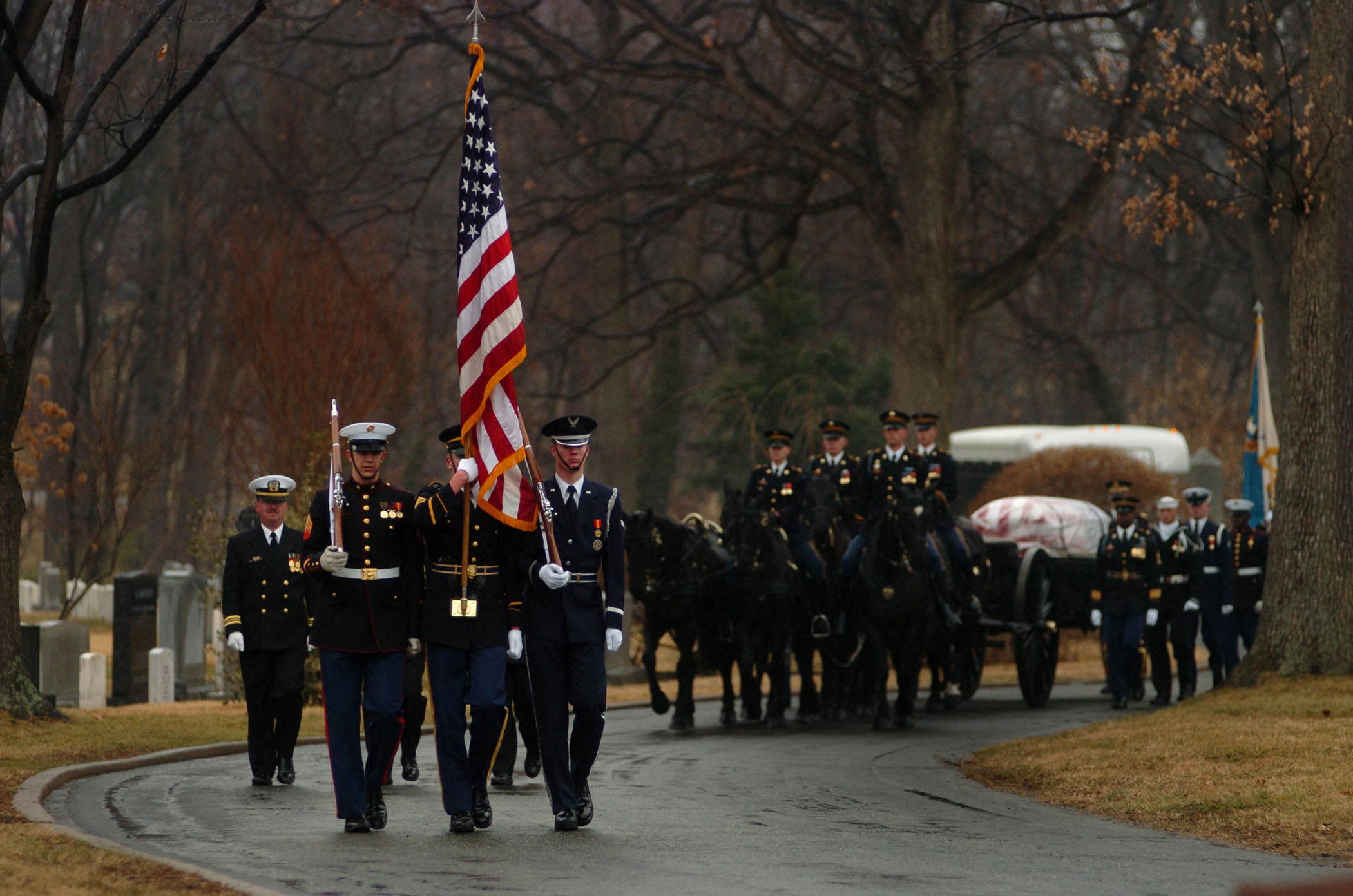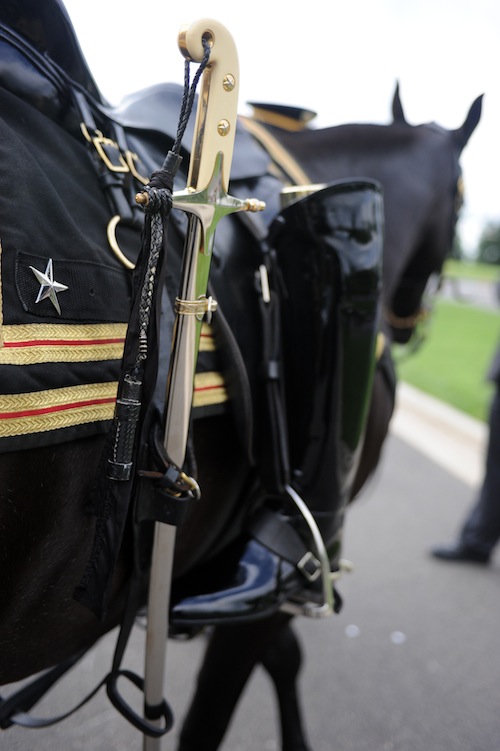As Veterans Day approaches, have you ever wondered why the caskets for military service members are always covered with American flags? Or why horses pull the caskets for presidents who receive military funerals? These traditions trace their roots back to the 18th and 19th centuries, and possibly even earlier.
Although we might think the flag covering the casket only symbolizes patriotism for service members who have died, there is actually a specific method to how the flag is placed.
Although we might think the flag covering the casket only symbolizes patriotism for service members who have died, there is actually a specific method to how the flag is placed. The blue section of the flag is put at the casket’s head above where the service member’s left shoulder is located. This tradition dates back to the Napoleonic Wars in the 18th and 19th centuries, where the flag was used to cover the bodies of dead service members to transport the bodies from the battlefield with caissons—chests or wagons that held and carried ammunition.
Horses play a significant role in funerals for both higher-ranked military service members in the Army or Marine Corps, such as corporals and American presidents. One custom includes six horses, half with riders and half without, that pull the caisson carrying the body in the funeral procession. The division between horses without riders and those with riders traces back to when horses pulled ammunition- and cannon-filled caissons in carriages while the ones without riders would carry the provisions for soldiers.
Those who are granted the privilege of this tradition for his or her funeral must rank as a corporal or higher in the Army or Marine Corps. Presidents, however, also receive this privilege since they serve as commander-in-chief for the U.S. during their years in office.
One of the oldest traditions, which likely existed back in the days of Genghis Khan, is when a lone horse follows the caisson while strapped with an empty saddle holding the recently passed rider’s boots reversed in the stirrups . Those who are granted the privilege of this tradition for his or her funeral must rank as a corporal or higher in the Army or Marine Corps. Presidents, however, also receive this privilege since they serve as commander-in-chief for the U.S. during their years in office.
The horse is called a “caparisoned horse” due to the highly detailed decorative coverings. In the Genghis Khan era, the significance of this horse had to do with its sacrifice in order to be there for the recently passed soldier in the afterlife. Today, the symbol of a warrior never riding again stems from the funeral of President Abraham Lincoln—the first president to receive this honor. A sampling of some other notable names that were granted the privilege of this tradition includes: Franklin D. Roosevelt, Herbert Hoover, Douglas MacArthur, John F. Kennedy, Dwight D. Eisenhower and Lyndon B. Johnson.
Explore more cultural views on death here.

 The Importance of Flags and Horses in American Military Funerals
The Importance of Flags and Horses in American Military Funerals




 First the Wealth Gap, Now the U.S. Has a Growing Health Gap
First the Wealth Gap, Now the U.S. Has a Growing Health Gap
 How to Comfort A Dying Loved One
How to Comfort A Dying Loved One
 Our Annual Seven Holiday Gifts for Someone Who Is Grieving, 2024 Edition
Our Annual Seven Holiday Gifts for Someone Who Is Grieving, 2024 Edition














